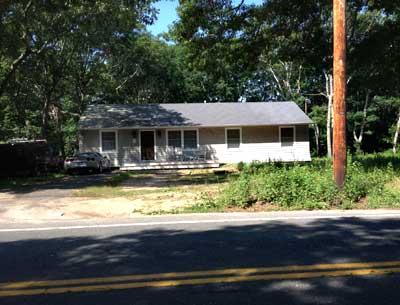Portrait of a Neighborhood

The average house price in 11932, Bridgehampton’s ZIP code, is $2.3 million, according to Trulia, the real estate website. What, you thought it was higher? Commensurate with, say, next-door Sagaponack 11962, whose average is a whopping $8.6 million? It just may be that the teensy houses that dot the Bridgehampton-Sag Harbor Turnpike and another street you may not have known existed have almost singlehandedly brought the number down.
That other street is Huntington Crossway, which was not so long ago dubbed “Crack Alley” by locals because of drug activity on the block. The street, which runs north from the turnpike to Scuttlehole Road, land of horse farms and grapevines, has indeed been the location of many drug arrests. While neighborhoods surrounding it have gradually been gentrified, the Crossway has remained staunchly downscale.
Chris Burnside, a broker with Brown Harris Stevens in Bridgehampton, was kind enough to give a tour this past Monday of the neighborhood — not his usual more tony turf. He recalled how in the early ’90s he drove down the Crossway in a BMW and the car was pelted by a group of kids throwing something hard. “I didn’t know if it was rocks or beer cans or what,” he said. “It was scary.” Fortunately for him they were only snowballs.
A pioneering real estate agent purchased a parcel on the Crossway in 2004 for $300,000 and built a dramatically nicer house than her neighbors’. She lived in it for four years before selling for it for $975,000 in 2008. It was marketed partly by touting its “completely convenient location — minutes to either Sag Harbor or Bridgehampton.” True enough. But today it is still the only upscale house on the street.
A ride in Mr. Burnside’s Peugeot S.U.V. down the Crossway revealed minuscule, by Hamptons standards, ranch houses and capes, without basements, of roughly 800 to 1,000 square feet, mostly built in the 1960s. He pointed out that while some properties are fairly well maintained, most are not. Certainly none can be considered “landscaped,” with the exception of the agent’s former residence, which is cut off from its disheveled neighbors by hedges. Lawns are overgrown and appear to be mowed irregularly. A truck or two sits on lawns. One car has been raised above the grass to be worked on, in a front yard. Helter-skelter scraggly bushes form the only attempt at prettification.
But when, about halfway down the Crossway, Mr. Burnside turned west onto Caldwell Road, we suddenly entered a different world. This could be a street in upscale suburbia, Anywhere, U.S.A. Houses are beautifully landscaped with a variety of shade trees, attractive fencing, and the ubiquitous seaside hydrangea. They are two-story, gabled, and clad in cedar shingle.
Two nearly identical cul-de-sacs branch out from Caldwell. Houses in this neighborhood, many of them abutting the backyards of the Crossway’s houses, are valued in the high ones: $1.8 to $1.9 million.
One of these streets, Birchwood Lane, leads to a wooded six-acre area. Well, it won’t be wooded for long. On Monday, Greg Konner of Konner Development, which is developing 7 of the 11 lots, was overseeing his crew as a backhoe carved out a deep recession.
“We’re digging the first hole!” he said, clearly excited at the prospect. When finished, his seven houses will ask $1.9 million each.
His company has been instrumental in gentrifying other parts of Bridgehampton. After building houses on Norris and Narrow Lanes, he said, those neighborhoods rose in value.
The asking price is solid, according to Mr. Burnside. “They’re selling close to what it would cost to build.”
If you were to drive through this new development you would end up at another subdivision in progress, Barn and Vine. Instead, we took another route to this 50-acre parcel, which will contain 37 houses, bordering Channing Daughters Winery on the west and the houses of the leafy suburban grid on the east — by taking Meadows East, a new road just to the west of the Crossway off Scuttlehole, to Barn Lane. Between 5,800 and 7,200 square feet, these future abodes mark another rung up the price ladder: All are asking circa $3 million.
If sold now, the half-acre lots on the Crossway, with all houses considered teardowns, would go for between $400,000 and $450,000 apiece. A deal? Perhaps. Along with the houses on the turnpike south of Scuttlehole, these are some of the last true Hamptons bargains. But no one seems willing, yet, to take the plunge.
Would Mr. Burnside, who is also a builder and currently finishing a $5 million house about a half-mile away, consider building on the Crossway?
“I’m a location snob,” he said. He prefers to build big, beautiful, sustainable houses with all the amenities on untouched land. But, he acknowledged, the street would serve customers looking for a “starter home” very well.
